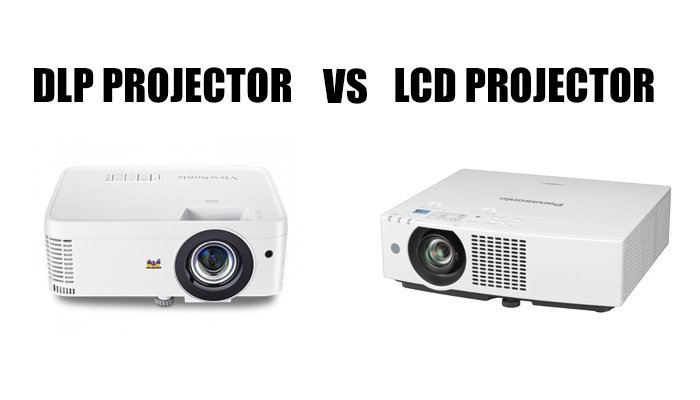If you are searching for a projector, you have likely come across DLP (Digital Light Processing) and LCD (Liquid Crystal Display) technologies. Both have unique features, advantages, and drawbacks. Choosing the right projector requires understanding these differences to make an informed decision that suits your needs. This guide provides a comprehensive comparison of DLP and LCD projectors, including their working mechanisms, benefits, limitations, and ideal use cases.
1. Understanding Projector Technology
Before diving into the specifics of DLP and LCD projectors, it is essential to understand how projection technology works. Projectors use a light source, optical system, and imaging technology to display visuals on a screen. The main distinction between DLP and LCD projectors is how they generate and process images.
2. What is a DLP Projector?
DLP (Digital Light Processing) projectors utilize an array of microscopic mirrors on a DMD (Digital Micromirror Device) chip to reflect light. These mirrors tilt thousands of times per second to project images through a spinning color wheel that produces vibrant visuals.
How DLP Projectors Work
- A light source, usually a lamp or LED, shines onto a DMD chip with thousands or millions of tiny mirrors.
- These mirrors reflect the light, directing it through a rapidly spinning color wheel.
- The wheel filters the light into red, green, and blue components before projecting the final image onto a screen.
- The entire process happens in milliseconds, resulting in sharp and smooth visuals.
Advantages of DLP Projectors
- High Contrast Ratio: DLP projectors produce deeper blacks and enhanced detail, making them excellent for home theatres.
- Smooth Motion Handling: Their fast response time ensures seamless video playback, ideal for gaming and action-packed scenes.
- Compact and Lightweight: Most DLP projectors are smaller and more portable than LCD models, making them easier to set up and transport.
- Low Maintenance: DLP projectors do not require air filters, reducing maintenance costs and effort.
Disadvantages of DLP Projectors
- Rainbow Effect: Some users notice flashes of red, green, and blue colors, which can be distracting.
- Limited Color Accuracy: Compared to LCD projectors, colors may appear less vibrant and true to life.
- Higher Cost: High-quality DLP models tend to be more expensive due to their advanced technology.
3. What is an LCD Projector?
LCD (Liquid Crystal Display) Multimedia projectors use three LCD panels to manipulate light and create an image. This technology is commonly used in classrooms, business presentations, and home entertainment setups.
How LCD Projectors Work
- A light source (lamp, LED, or laser) passes through a set of three LCD panels—one each for red, green, and blue.
- These panels control the light passing through, adjusting the intensity of colors for image formation.
- The processed light is combined and projected onto the screen to create a clear and vibrant image.
Advantages of LCD Projectors
- Superior Color Accuracy: LCD projectors produce richer and more accurate colors, making them excellent for presentations and photography.
- No Rainbow Effect: Unlike DLP projectors, LCD projectors do not suffer from color flashes.
- Better Brightness Levels: LCD projectors are better suited for well-lit environments as they offer higher brightness levels.
- Energy Efficiency: LCD projectors consume less power than some DLP models, making them cost-effective in the long run.
Disadvantages of LCD Projectors
- Bulkier Design: Compared to DLP models, LCD projectors tend to be larger and heavier, making portability a concern.
- Lower Contrast Ratio: Blacks may appear more grayish, affecting the depth of dark scenes.
- Higher Maintenance: LCD projectors require periodic filter cleaning and maintenance to ensure longevity and performance.
4. DLP vs. LCD: Side-by-Side Comparison
| Feature | DLP Projectors | LCD Projectors |
|---|---|---|
| Image Quality | Sharper images, high contrast | Brighter colors, better accuracy |
| Portability | Lightweight and compact | Bulkier and heavier |
| Maintenance | Low maintenance | Requires filter cleaning |
| Color Accuracy | Moderate | High |
| Contrast Ratio | High | Moderate |
| Motion Handling | Smooth for fast-moving scenes | Decent, but not as smooth as DLP |
| Cost | Generally higher | More budget-friendly |
| Best For | Home theaters, gaming, presentations | Classrooms, business, bright rooms |
5. Choosing the Right Projector for Your Needs
- For Home Theater and Gaming, DLP projectors offer better contrast and smooth motion, making them the preferred choice.
- For Business and Education: LCD projectors provide better color accuracy and brightness, ensuring clear visibility in well-lit environments.
- For Bright Environments: LCD projectors outperform DLP models in rooms with ambient lighting.
- For Portability and Durability: DLP projectors are lightweight, compact, and require less maintenance, making them convenient for frequent travel and use.
6. Additional Considerations
Resolution and Image Clarity
Both DLP and LCD projectors come in a variety of resolutions, from 720p HD to 4K Ultra HD. Higher resolution projectors provide better clarity and sharper details, which is crucial for professional and entertainment use.
Lamp Life and Maintenance
- Traditional lamp-based projectors require bulb replacements after 2,000 to 5,000 hours of usage.
- LED and laser projectors have longer lifespans, often exceeding 20,000 hours, reducing maintenance costs.
Connectivity and Compatibility
Modern projectors offer various input options, including HDMI, USB, VGA, and wireless connections, ensuring compatibility with multiple devices like laptops, gaming consoles, and streaming sticks.
7. Final Thoughts
Choosing between a DLP and LCD projector depends on your primary usage and environment. If you prioritize contrast, motion smoothness, and portability, a DLP projector is the ideal option. If color accuracy, brightness, and affordability are your key concerns, an LCD projector will serve you better.
Both technologies have their strengths and weaknesses, so evaluating your specific needs and budget will help you make the best decision for a superior viewing experience.
FAQs
- Which projector lasts longer, DLP or LCD?
- DLP projectors tend to last longer as they have fewer moving parts and do not require frequent filter replacements.
- Are DLP projectors good for gaming?
- Yes, DLP projectors offer low input lag, fast response times, and smooth motion handling, making them ideal for gaming.
- Do LCD projectors work well in bright rooms?
- Yes, LCD projectors have higher brightness levels, making them suitable for well-lit environments like classrooms and conference rooms.
- Which type of projector is more affordable?
- LCD projectors are generally more budget-friendly while still providing high-quality images.
- Is the rainbow effect in DLP projectors a big issue?
- It depends on the user. Some individuals notice it, while others do not. High-end DLP models have significantly minimized this effect.



0 Comments on “DLP vs. LCD Projectors: Choosing the Right Projector for Stunning Visuals”